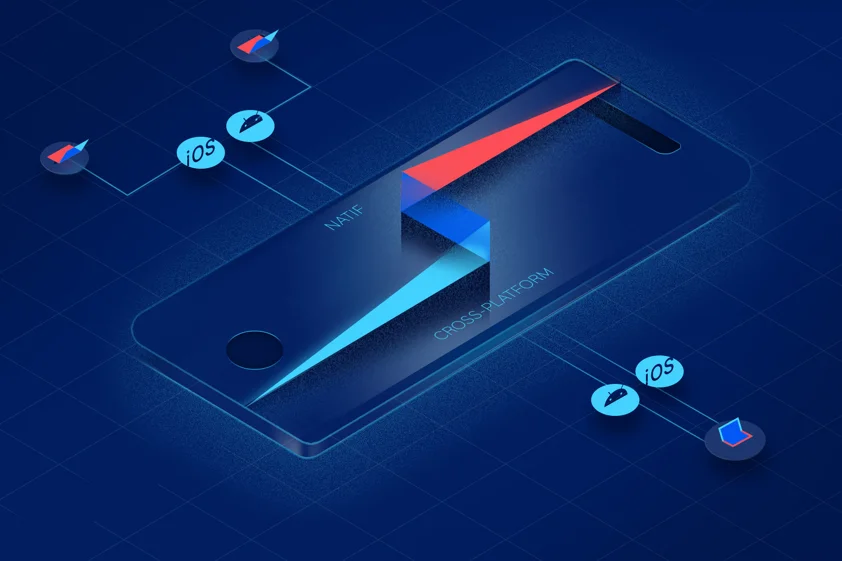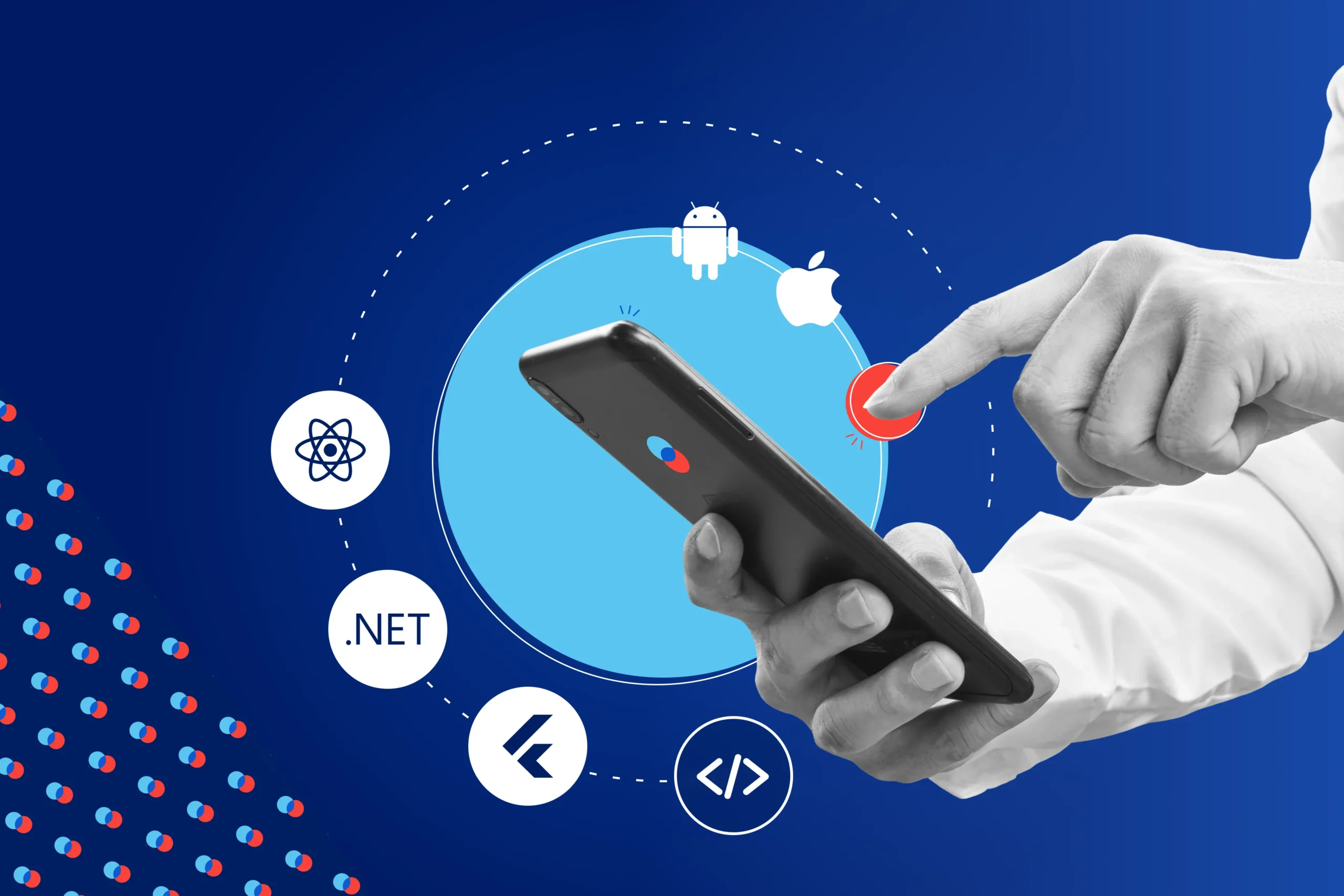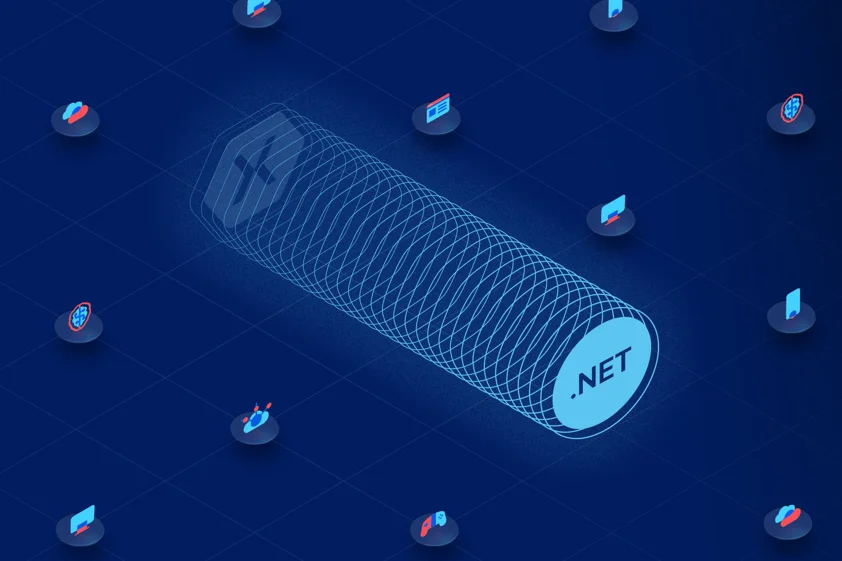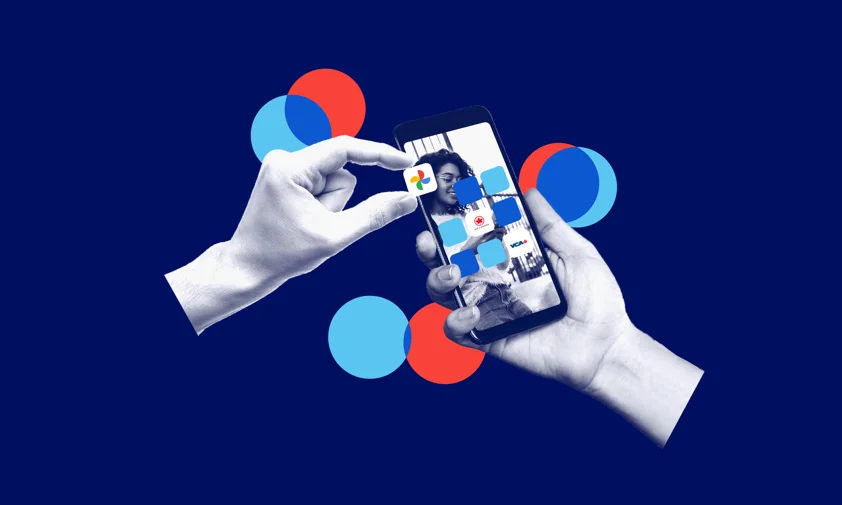When our experts start to work on a new mobile app project, they first ask themselves if they will design a native or a multiplatform mobile app. If the rendering and the performance aspects of these two approaches are relatively equivalent, why is it so important to make an informed decision between these types of development? Let’s take a look at the two options we have.
Native Development
Historically, mobile apps were developed in a native manner, because no efficient multiplatform solution existed at the time. In native development, these are the two main programming languages:
- Swift is the language developed by Apple to develop in iOS environments. It replaced Objective-C, because it was much more efficient to work with for developers.
- Kotlin, which was developed by the JetBrains firm, was established as the best choice to develop apps in Android environments. It allows for complete Java interoperability, which is another development option for Android.
Multiplatform Development
Multiplatform development came to be in an effort to reduce development costs by increasing code reuse. The principle is to use the same code to create a unique app that is compatible on different peripherals and platforms.
In multiplatform development, different types of options are available:
- React-Native: Developed by Meta, this user interface (UI) work frame allows developers to use similar Web React.js work frame concepts to create apps by using native UI components from each platform. This way, developers can develop in TypeScript and design a high-performant iOS and Android app that offers an interesting user interface. Native features are accessible with a high number of available plugins. It is also possible to integrate native code (Swift, Kotlin) if a particular feature requires access to a native feature and for which the plugin doesn’t exist.
- .NET: This unified, open-source multiplatform development work frame allows developers to create many types of apps. One of .NET’s notable benefits is that all the platforms’ native API interfaces (such as iOS and Android) are directly accessible in C#: so there is no need to mix in Swift or Kotlin into the code to access these APIs. To share the UI code, Uno Platform is an important open-source platform that enables the creation of interfaces that work in iOS, macOS, Linux, Android, and WebAssembly environments.
- Uno Platform can be particularly efficient to develop interfaces compatible with different screen sizes, for example between an iPad and an iPhone.
- Flutter: this open-source framework from Google enables the creation of multiplatform apps compiled in native mode based on a single code.
En développement multiplateforme, différents types d’options sont disponibles :
- React-Native : développé par Meta, ce cadriciel (framework) d’interface utilisateur permet aux développeur.euse.s d’utiliser des concepts similaires au framework Web React.js pour produire des applications, en utilisant les composantes d’interface utilisateur natives de chacune des plateformes. Les développeur.euse.s peuvent ainsi développer en TypeScript et produire une application iOS et Android très performantes offrant une interface utilisateur intéressante. Les fonctionnalités natives sont accessibles avec un grand nombre de plugiciels (plugin) disponibles. Il est aussi possible d’intégrer du code natif (Swift, Kotlin) si une fonctionnalité particulière requiert l’accès à une fonctionnalité native et que le plugiciel n’existe pas déjà.
- .NET : de développement multiplateforme au code source libre unifiée, elle permet de créer de nombreux types d’applications. Un avantage notable de .NET est le fait que l’entièreté des interfaces API natifs des plateformes (comme iOS et Android) sont directement accessibles en C# : il n’y a donc pas besoin de mélanger du Swift ou du Kotlin dans le code pour accéder à ces interfaces API. Pour partager le code de l’interface utilisateur, Uno Platform est une importante plateforme au code source libre permettant de créer des interfaces fonctionnant sur iOS, macOS, Linux, Android et WebAssembly. Uno Platform est, entre autres, particulièrement efficace pour développer des interfaces qui s’adaptent aux différentes tailles d’écrans, par exemple entre un iPad et un iPhone.
- Flutter : ce framework en code source libre de Google permet de créer des applications multiplateformes compilées en mode natif à partir d’un seul code.
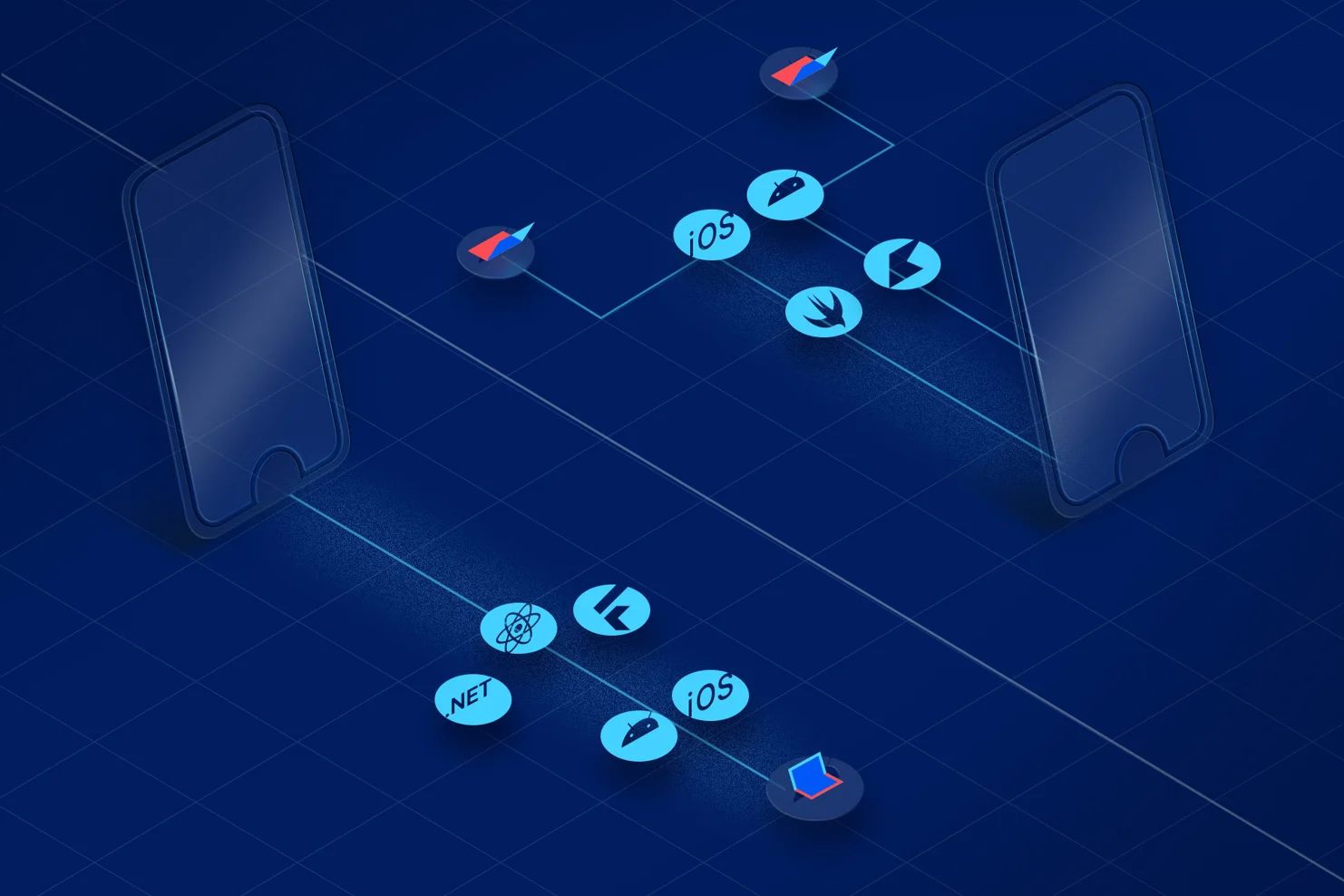
Needs to Consider Before Choosing a Mobile App Development Type
Meeting the Needs of Your Target Market and Users
Fortunately, one type of development or another will not be a barrier to achieving your business goals. On the other hand, the market or the business context can sometimes impact the development type: some companies will focus on developing exclusively for iOS, considering the majority of its consumers use an iPhone. Others will want a unique app that meets all the users’ needs, and so they will choose a multiplatform app.
Considering Time-to-Market Needs
Often, it’s for its speedy production process that multiplatform development is favoured: indeed, since it consists of a single development process for several platforms, it is obvious that the global development time is notably quicker is we want to develop a mobile app for multiple operating systems.
Providing the Best User Experience and User Interface
In terms of visual design, choosing native or multiplatform development won’t affect decisions, because the main objective is to get the most out of native features and controls, like a « Previous » button or navigational chart, to build a UX based on known user behaviours.
For user interface, there exists two options:
- Create an extremely customized UI reflecting brand image, whatever the platform;
- Create an Android interface that will remain similar to Google’s Material Design and an iOS interface that follows HIG (Human Interface Guidelines).
Generally, the second option is more popular: it enables the creation of an interface based on the users’ experience so that they don’t feel lost.
To do so, multiplatform development can tap into native features to adapt the most common functionalities to each operating system – and so to each user habit. On the other hand, native development will directly use native features.
Passing Quality Tests
The biggest benefit of multiplatform app tests compared to native app tests is the data volume we can get by starting the tests on one platform or the other. For a multiplatform app, a first series of tests on iOS or Android will allow us to fix most bugs. Bugs specific to each platform, which are now fewer in numbers, can then be fixed.
One of the challenges in multiplatform testing is that sometimes, correcting a bug in one platform can have an effect on another platform. Because of this risk, any modification will require testing on each platform to ensure no issue has been introduced.
Meeting Internal Needs
The choice of language will have a very important impact on the whole project, from start to finish. Indeed, the team responsible for the app, both the client’s and at nventive, will need to be specialized in a certain type of development.
Thus, the client must be vigilant about its internal team’s preexisting skills, since nventive’s experts are skilled in all types of development.
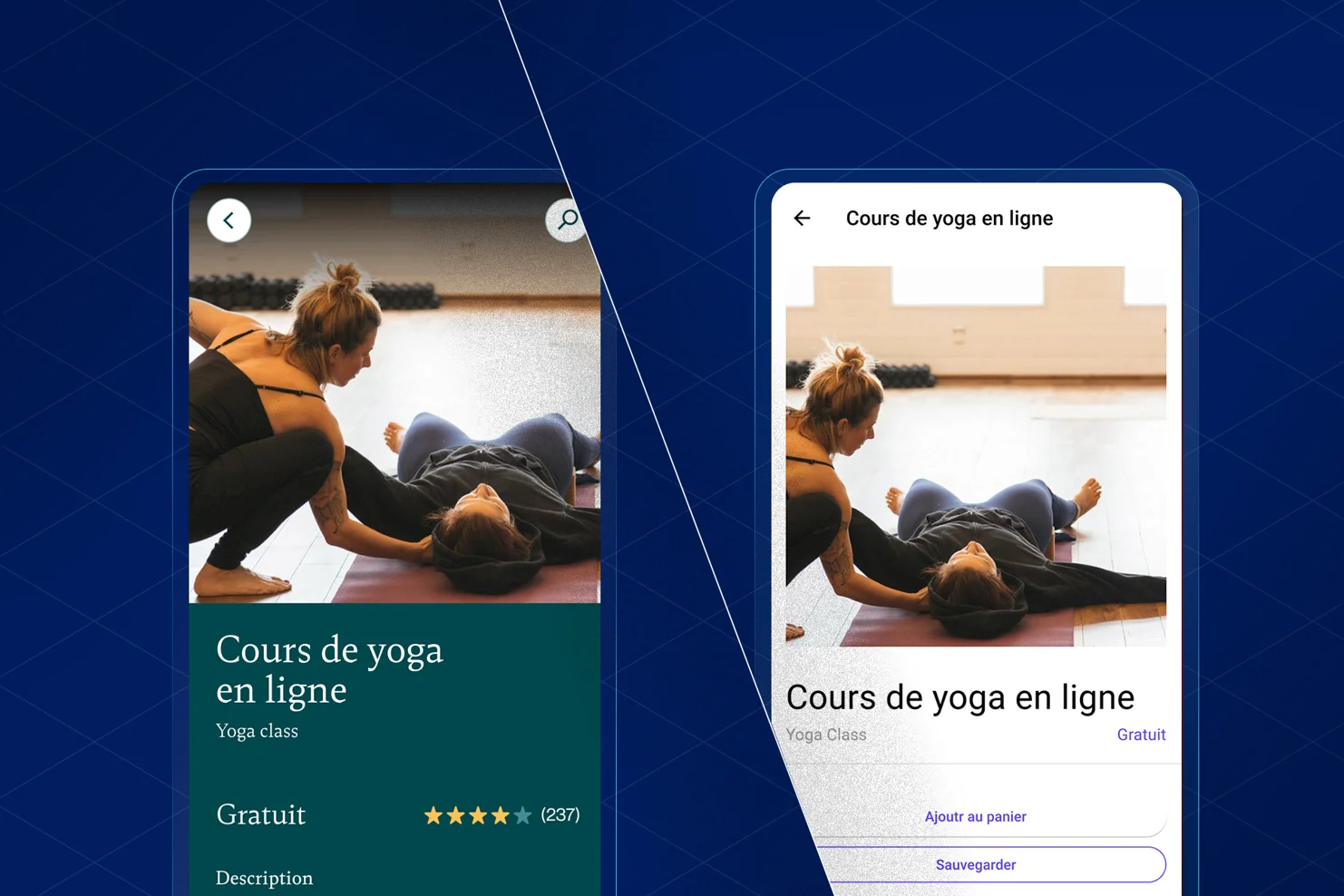
Fulfilling Evolution and Maintenance Needs
As for maintenance and evolution, several factors apply to both native and multiplatform development.
The first obvious factor is the platform’s regular updates: each year, Apple and Google release a new version of their operating systems, inevitably imposing an update for the app. This can nonetheless bring nice continuous evolution opportunities, with the addition of new features offered in the new versions.
Regarding multiplatform maintenance, apart from operating system updates, there is also the multiplatform technology that must be considered. In other words, when we choose this type of technology, we effectively must maintain three platforms.
Choosing multiplatform technology still has the major benefit of a unique code, which simplifies management.
Taking into Account the Total Cost of Ownership
It’s important to consider the total cost of ownership, namely the app development cost, added to the operating costs during the app’s useful life. These costs are generally lower for a multiplatform app, because of all the above-mentioned reasons: development cost, necessary human resources, evolution and maintenance costs, etc.
To sum up, there are several reasons why you can opt for native development: for some projects, this approach will enable the creation of the most complete user experience calling upon more precise native features, such as sensors, virtual or augmented reality, and by offering a user interface equipped with features like blurring or neomorphism.
As for digital strategy, some feature sets can impact the decision to go with this approach.
Multiplaform development is the way to go for the vast majority of our projects for many reasons, including costs and development time. Efficiency and rendering are just as good, and multiplatform technologies allow you to benefit from the latest features without significant delays.
Also, there are more developers specialized in multiplatform development, which allows for developing and evolving the solution for as long as necessary.
There it is, you now understand how our experts choose a native or multiplatform mobile development approach.

